Scientist of the Day - Chesley Bonestell
Chesley Bonestell, an American space artist, was born Jan. 1, 1888, but since we never get to celebrate a New Year’s Day birth in these posts, we honor him today, on the day of his death, June 11, 1986. There were earlier artists, especially in France, who attempted to show the public what the surface of the Moon might look like, or how Mars would appear from one of its two moons, but Bonestell (pronounced BAHN-a-stul) brought the artistic depiction of space exploration to another level entirely. He began painting the human presence in space in the 1940s, and his paintings appeared frequently in Life Magazine, but he came to much broader public attention when he illustrated a book written by Willy Ley, called The Conquest of Space (1949), with some 56 paintings, many of which had already appeared in magazines such as Life. We have the first edition of this book in our History of Science Collections.
Bonestell’s paintings showed not only planetary and lunar surfaces, but space ships, and space-suited humans, at a time when neither existed except in the imaginations of would-be space scientists like Werner von Braun, or of science fiction writers like Arthur C. Clarke, or of visionary artists such as Bonestell. We show here the dust jacket of The Conquest of Space, featuring a Bonestell painting depicting a rocket landed on the Moon (second image); and the surface of Mercury, from the rear endpaper (third image).
It has been said, often, that Bonestell was more important for launching the American space effort than any other single individual. Such hyperbole would normally be taken with quite a few grains of salt, but the number of scientists and engineers who have gone on record, asserting that they decided to go into space science after seeing one of Bonestell’s paintings, is extensive – the list includes Carl Sagan and many more. One particular painting is frequently singled out as seminal: Saturn as viewed from Titan, which was painted in 1944 for Life and then re-published in The Conquest of Space (fourth image). Bonestell would go on to illustrate at least ten other books on the future of space flight in the 1950s and 1960s.
One of the unsung artistic treasures of Kansas City is a collection of eight Bonestell paintings that are owned by MRIGlobal, the international scientific research institute that sits not a mile from our Library. In 1965, when they were called the Midwest Research Institute, they mounted a display of Bonestell paintings, and another three years later. In the years that followed, Bonestell and a patron friend donated a total of eight Bonestell paintings to the Institute, in frames that he had painted and matted himself. The paintings are quite extraordinary and are hardly ever reproduced; we are grateful to MRIGlobal for allowing us to show some of them to you.
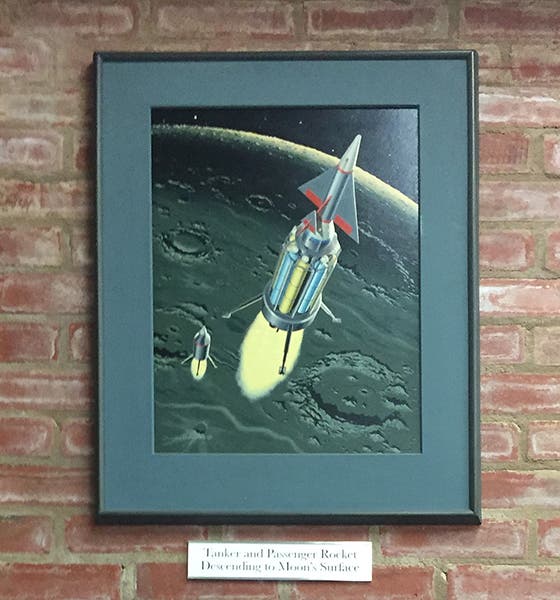
Tanker and Passenger Rocket Descending, oil painting by Chesley Bonestell, before 1961 (MRIGlobal)
Five of the paintings are mounted on brick walls within MRIGlobal headquarters. We include two of those: Tanker and Passenger Rocket Descending to the Moon’s Surface(fifth image), and Mars Seen from Deimos (sixth image).

Mars Seen from Deimos, oil painting by Chesley Bonestell, before 1964 (MRIGlobal)
The other three paintings hang in the office of Dr. Tom Sack, President and CEO of MRIGlobal, who clearly appreciates fine space art. We see below a photo of all three: from left to right, they are: Takeoff for Mars from Earth Orbit; In Orbit over the Moon; and Beyond the Solar System (epsilon Aurigae).
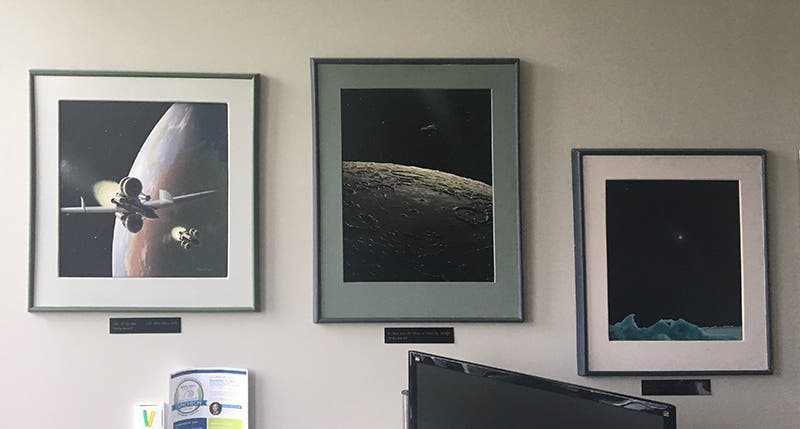
Three Bonestell paintings in the office of the CEO and President of MRIGlobal (MRIGlobal)
The central painting is our favorite, and we show an enlargement, without the matte and frame, as our first image above. This is an astounding representation, considering that it was done sometime before 1961, when the United States had yet to put a man into orbit and had little idea what the surface of the Moon looked like from a hundred miles up. Bonestell’s ability to imagine the future of the entire American space program was absolutely uncanny; his depictions have never seemed dated, even though many were painted 70 years ago. There has never been a space artist quite like him. I would like to thank Pam Sharitz-Tesch of MRIGlobal, for allowing me access to their Bonestell paintings and providing information from their archives. Dr. William B. Ashworth, Jr., Consultant for the History of Science, Linda Hall Library and Associate Professor, Department of History, University of Missouri-Kansas City. Comments or corrections are welcome; please direct to ashworthw@umkc.edu.

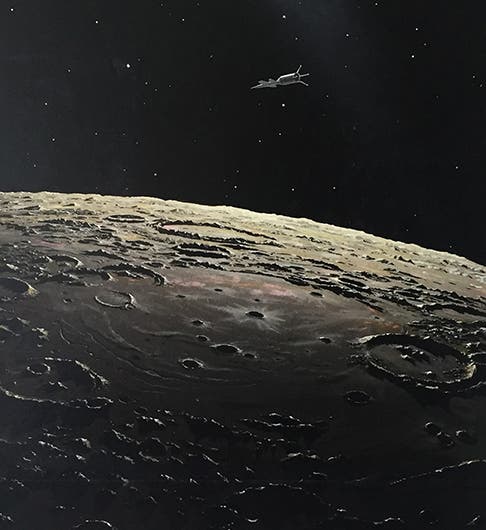
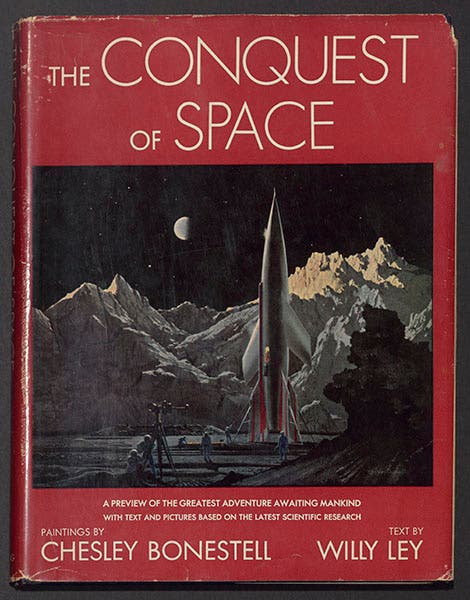

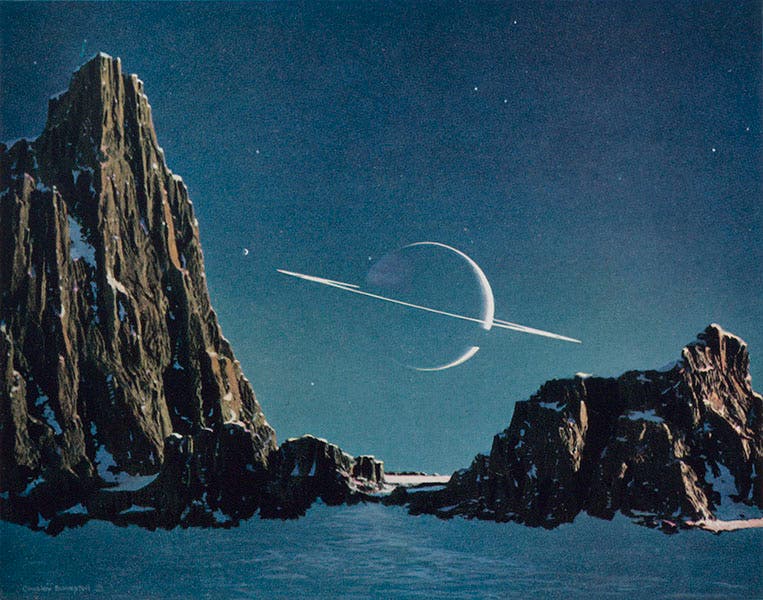
![“Aurora Borealis,” hand-colored wood engraving by Josiah Wood Whymper, [Natural Phenomena], plate 2, 1846 (Linda Hall Library)](https://assets-us-01.kc-usercontent.com:443/9dd25524-761a-000d-d79f-86a5086d4774/0245ffcb-b70c-477c-8792-0a73ebd54eb2/Whymper%2011.jpg?w=210&h=210&auto=format&fit=crop)



